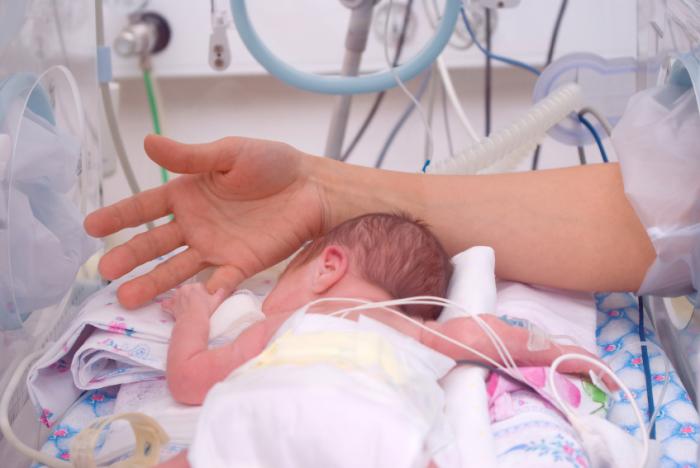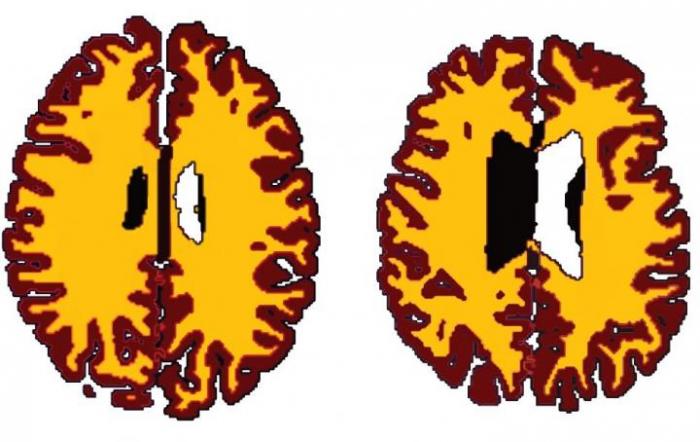Bacterial pneumonia is an inflammation of the lungs due to some form of bacteria. There are different types of bacteria that may lead to the infection.
The lungs are made up of different sections or lobes. There are three lobes on the right and two on the left. Bacterial pneumonia can affect both lungs, one lung, or even just one section of a lung.
The lobes of the lungs are made up of small air sacs called alveoli. Normally, the air sacs fill with air. Oxygen is inhaled and carbon dioxide in exhaled.
When a person develops pneumonia, the air sacs become inflamed, which can cause them to fill with fluid. If the air sacs are filled with fluid instead of air, it can make breathing difficult. In some cases, the lungs may not get enough oxygen.
Contents of this article:
- Causes and risk factors
- Symptoms and complications
- Diagnosis of bacterial pneumonia
- Treatment of bacterial pneumonia
- Prevention of bacterial pneumonia
- Other causes of pneumonia
Causes of bacterial pneumonia
Pneumonia is often classified as either community-acquired pneumonia or hospital-acquired pneumonia. The classification refers to where a person was when they became infected. Community-acquired pneumonia is the most common type of pneumonia.
![[Man Coughing]](http://www.medicinetechnews.com/images/201608/man-coughing.jpg)
Bacteria that cause pneumonia are spread through coughing.
If a person develops community-acquired pneumonia, it means they were infected by bacteria outside of a hospital. Bacteria usually enter the lungs after someone breathes in particles or droplets from a sneeze or a cough from someone who has the infection.
Viruses can also cause community-acquired pneumonia. The most common causes of community-acquired pneumonia are Streptococcus pneumoniae and Haemophilus influenzae.
Hospital-acquired pneumonia occurs within a few days of being exposed to a germ in a healthcare setting, such as a hospital or nursing home. Hospital-acquired pneumonia can develop when a healthcare worker transmits germs from one patient to another.
The most common causes of hospital-acquired pneumonia are Pseudomonas aeruginosa and Staphylococcus aureus.
Risk factors
Although anyone can develop bacterial pneumonia, there are certain factors that put a person at a higher risk.
According to the Cleveland Clinic, people who have a weakened immune system due to cancer treatment or an organ transplant are at an increased risk of developing bacterial pneumonia.
Smoking and having a long-term medical condition, such as emphysema, increases the risk. Being over 65 and having recent surgery also puts people at a higher risk.
Symptoms of bacterial pneumonia
Symptoms of bacterial pneumonia can vary in severity. Some people only have mild symptoms while others develop life-threatening complications.
According to the American Lung Association, typical symptoms of bacterial pneumonia include:
- Chest pain
- Shortness of breath
- A cough that may produce yellow or green mucus
- Fever
- Tiredness
- Chills
Symptoms of bacterial pneumonia tend to be similar in both children and adults. According to the American Academy of Pediatrics, toddlers and infants may cry more than usual, be less energetic, and appear pale.
If a person thinks they have symptoms of pneumonia, they should see their doctor. If an individual has symptoms of pneumonia, it’s tough to determine the cause without seeing a physician.
Since bacterial pneumonia is treated differently to viral pneumonia, it’s important to find the cause so that appropriate treatment is given.
Complications
Complications from bacterial pneumonia can occur in both children and adults. Anyone can develop complications from bacterial pneumonia, but people with a weakened immune system and the elderly are at a higher risk.
Complications may include the following:
- Respiratory failure: Respiratory failure can develop if the oxygen in the lungs is too low or if carbon dioxide becomes too high. It can occur due to inadequate breathing, and a person may eventually stop breathing.
- Sepsis: Sepsis occurs when an infection causes an overwhelming inflammatory response. Sepsis can lead to multiple organ failure and be life-threatening.
- Pleural effusion: A pleural effusion is when fluid builds up around the lung.
Diagnosis of bacterial pneumonia
A diagnosis of bacterial pneumonia is made after various diagnostic tests and a physical exam is completed. During a physical exam, the doctor will listen to the lungs to determine if they sound abnormal.
![[Chest x ray]](http://www.medicinetechnews.com/images/201608/chest-x-ray.jpg)
Doctors will carry out a chest X-ray to assess fluid buildup in the lungs.
In most cases, a chest X-ray will be done to check for areas of inflammation or fluid in the lungs.
Additional tests may also be performed, such as a CT scan and an arterial blood gas. A blood gas measures the amount of oxygen and carbon dioxide in the blood. It helps determine how well a person is breathing and exchanging gasses.
A bronchoscopy may be performed to look into the lungs and also obtain a sample of mucus. The procedure is done by inserting a small tube with a tiny camera through the mouth into the lungs. The patient is given medication to numb their throat and relax.
Treatment of bacterial pneumonia
Treatment for bacterial pneumonia includes antibiotics, which target the specific bacteria causing the infection. Medications to make breathing easier may also be prescribed.
Additional medications may include over-the-counter drugs to ease aches and pains and reduce fever.
Home care will often include rest and drinking plenty of fluids unless otherwise instructed by a doctor. It’s also important to finish a course of antibiotics as prescribed even if symptoms have improved.
Some people may require hospitalization for bacterial pneumonia. Hospitalization may be required if someone needs oxygen, has dehydration, or needs breathing assistance with a ventilator.
People who develop complications may also require additional treatments that involve being hospitalized.
As a precaution, those at an increased risk of complications may also be hospitalized so they can be monitored closely. These groups include people over 65 or under 2 months.
Prevention of bacterial pneumonia
![[Child gets Vaccine]](http://www.medicinetechnews.com/images/201608/child-gets-vaccine.jpg)
An annual flu vaccine can help prevent pneumonia.
One of the best ways to prevent bacterial pneumonia is by keeping the immune system working well. Eating healthy foods, getting enough rest, and frequent handwashing are good ways to start.
Since bacterial pneumonia can develop as a complication of the flu, getting an annual flu shot may prevent pneumonia.
A pneumococcal vaccine is also available that may reduce a person’s chances of developing bacterial pneumonia. The vaccine protects against S. pneumoniae bacteria, which are often a cause of bacterial pneumonia.
The vaccine is often recommended for adults over 65 and children between 6 weeks and 5 years.
Other causes of pneumonia
In addition to bacteria, pneumonia can also be caused by viruses and fungi. Regardless of the cause, symptoms of pneumonia are often similar.
Because symptoms are similar in people who have viral and bacterial pneumonia, it makes it difficult to determine the cause at first.
According to the Cleveland Clinic, symptoms of bacterial pneumonia tend to be more severe than viral pneumonia and often come on suddenly. Symptoms of viral pneumonia tend to come on slower and are similar to the flu at first.
One way to tell the difference between viral and bacterial pneumonia is a mucus sample. A mucus sample is coughed up or sucked out of the lungs and analyzed under a microscope to determine if any bacteria are present.
Supportive treatment for pneumonia, such as oxygen and fever-reducing medicine is often the same whether the cause is viral or bacterial. The main difference in treatment is that antibiotics are needed to treat bacterial pneumonia.



